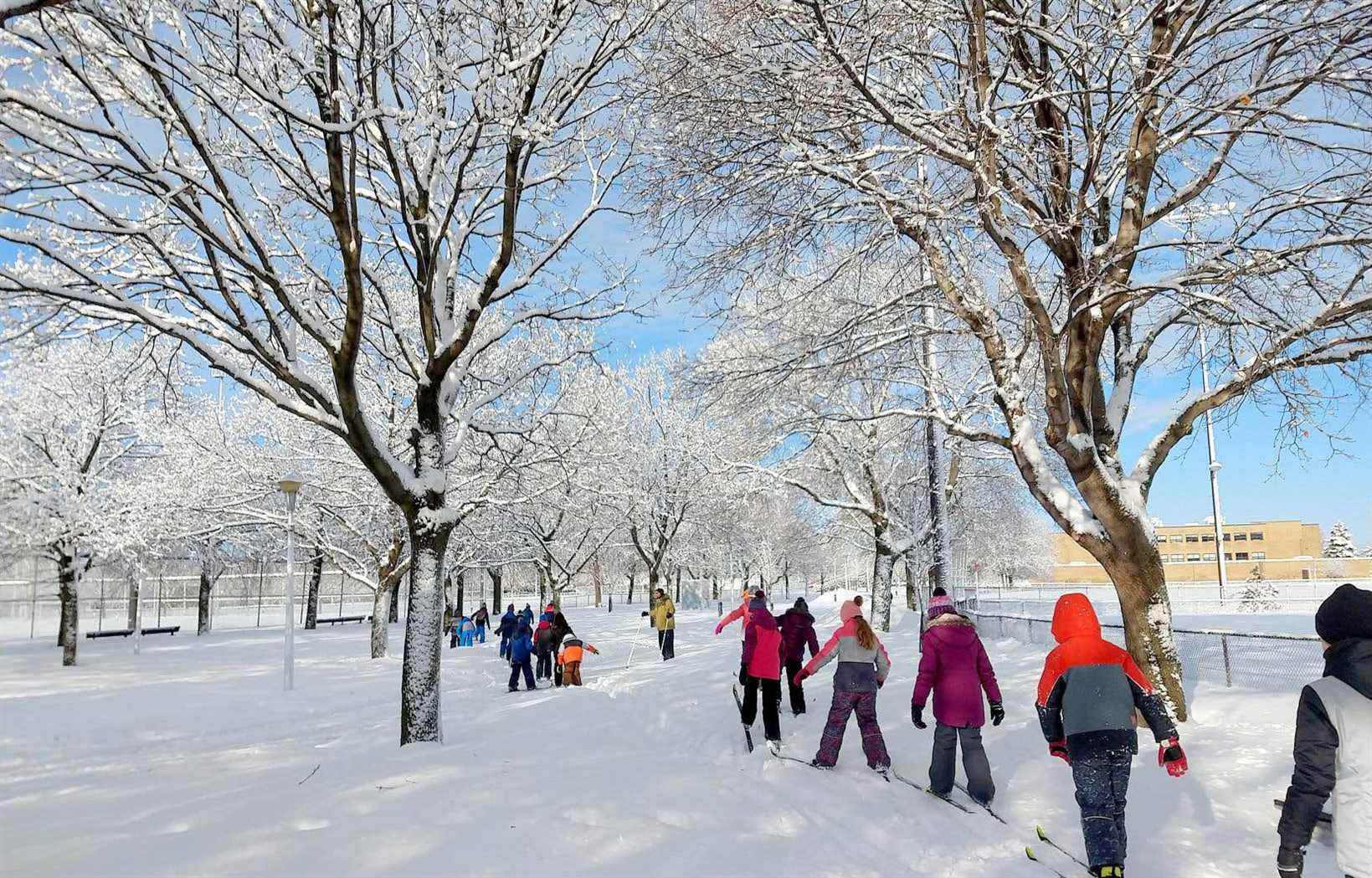This text is part of the Teachers’ Week special booklet
At Saint-Fabien elementary school, located in Mercier-Ouest, physical education has taken on a very pleasant color over the past three years: a large part of the lessons take place outdoors.
Outdoor activities take place in nearby urban parks and vary with the seasons: cross-country skiing, snowshoeing, ice skating, hiking, biking, scootering and orienteering.
Two physical education specialist teachers, Jennifer Laperle and David Côté, are at the heart of this very popular initiative with the 550 students from kindergarten to grade six.
At the moment, about 50% of physical education classes take place outdoors, and over the next few years, with the arrival of new equipment – which is long overdue due to shortages caused by the pandemic – this proportion should reach 80%.
“The students are always enthusiastic, and it introduces them to the parks in their neighborhood, which adds to the activities they can do with their families,” says Jennifer Laperle. We often have students who return with their parents to the places they discovered in class. These places are accessible to everyone, and that is our goal, because healthy lifestyle habits develop more easily when we can indulge in our activities close to home. »
The development of active transport such as bicycles and scooters is part of the program, especially for fifth and sixth graders. Soon, Kindergarten and Grade 1 students will have balance bikes, without pedals.
Another popular activity: orienteering. It is inspired by the geocaching “, a treasure hunt-type activity assisted by phones or tablets, but instead of using electronic devices, in orienteering, real maps are used to learn how to find your way in neighborhood parks.
In winter, with the younger classes, just getting dressed quickly enough to go outside without taking up too much class time is a challenge and part of learning. Parents are also informed in advance so that their children bring appropriate clothing.
Beyond the physical education program, four or five larger outings take place during the year.
Inclusive sports
Adults who have experienced the humiliation of being picked last as soccer or basketball teammates during their school years agree that individual sports, such as cross-country skiing or cycling, have the advantage of making it easier for each student to progress at their own pace and level.
“We choose inclusive sports,” says David Côté. When we go cross-country skiing with our sixth-grade students, in the park, it is possible to find challenges for those who are used to doing them, while taking care of those who have never tried. The goal is to get the students interested, to light a little flame, and later, if they like it, they’ll make it on their own. »
In addition, the school has equipment to allow less fortunate students to participate in all sports with others. If a pupil has a bicycle, he can bring it, but if he does not have one, he can borrow a bicycle from school.
“The school’s population has doubled in recent years, and not everyone is equally advantaged,” says Jennifer Laperle. We have a lot of newcomer families and less well-off families. In the past, all students had bicycles, but this is no longer the case today. »
Later, when the health situation allows it, the two teachers even plan to introduce students to the joys of urban camping.
Inspiration
Implementing such a project in a school requires everyone’s participation. Beyond the physical education teachers, the management and all the teaching staff are involved in the success of this adventure.
“Our colleagues quickly joined the project, because they realize what it brings to their students, says David Côté. They are there to help us, and it has become a common project for the whole school. In addition, some teachers have started teaching outdoors. They realize the pleasure of going to teach mathematics or French outside, in parks. »
